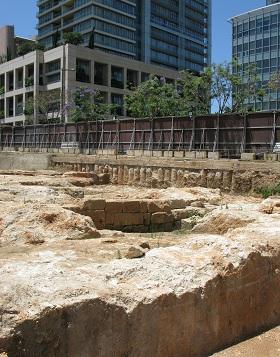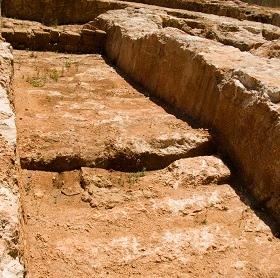Using AI to control energy for indoor agriculture
30 September 2024
Published online 16 August 2012

A row over archaeologically sensitive land in Beirut has been settled. Argument had raged about whether the proposed site for a US$500 million luxury complex was once an ancient Phoenician port or just a rock quarry. But staff at Lebanon's Ministry of Culture have now dated the ancient trenches and stones to the 1st century AD and believes they were most likely the foundation of a large Roman building.
"[The Romans] began the first foundations and during [construction] they changed the plan," says Assaad Seif, the archaeologist coordinating research and excavations for the government. Excavation revealed that the first foundation was incomplete and some of the blocks laid were dismantled and reused in a new building. "They stopped digging and shifted over to build foundations that are narrower."
For more than a year, Lebanese activists have waged a media campaign to oppose construction of the complex on the grounds that would destroy cultural heritage left from a Phoenician port. The consortium behind the project eventually won the dispute because there was no evidence suggesting it was used for maritime purposes nor does it appear to date from the Phoenician period between 1200 and 300 BC. The Phoenicians inhabited the area several centuries before the Romans who arrived at modern day Lebanon in 64 BC.
Ralph Pederson, a marine archeologist at Philipps University Marburg (Philipps-Universität Marburg) in Germany dismissed the claim. "It was not possible for it to have functioned as a shipyard, ship storage sheds, or slipways based on the physical characteristics of the two large trenches."
"Hauling ships up [these trenches] would only have destroyed them. No one would have attempted such a thing," adds Pederson, who was brought in by the developer to assess the site. The report he prepared, however, does not suggest what the trenches could have been used for in the past.
Seif from the Ministry of Culture dates the site to the Roman period based on 2nd century pottery found in the area and the size and shape of the stones in the trenches. The types of stones used resemble those found at a 1st century Roman bathhouse Seif excavated in the nearby neighborhood of Gemmayzeh. While that site was well documented, few remains of the coastal site planned for the luxury complex had been assessed before it was handed over to its current owners.

"[The trenches and stones] were used for a building that was horizontally truncated so we don't have any remains of this building," says Seif. "We only have the foundation trench and some of the stones of the foundation. Below is just bedrock."
Helen Sader, who chairs the department of archaeology at the American University of Beirut, said that if the site had been a quarry, it was likely to have been small and insignificant. Beirut's major quarry was a limestone promontory above the ancient city. Sader said that experts should have been brought in to inspect the site from the outset.
The archaeologist for the Ministry of Culture who originally made the claim that it was a port, Hisham Sayegh, has moved to a job in the United Arab Emirates. He did not respond to Nature Middle East's request for comment. Following the report provided by Pederson that disputed Sayegh's findings, Gaby Layoun, the minister of culture, signed away the property for development.
The identification of the site as a Roman building instead of a Phoenician port will probably not satisfy those lamenting its destruction. Commercial interests were responsible for the hasty modernization of this downtown area of Beirut after the Lebanese Civil War ended in 1990, at the expense of historical remnants. But for archaeologists, this last contested space was at least assessed before it became another lost layer in Beirut's past.
"When you have very important and substantial remains, of course you have to keep them," Sader says. "But what is more important than keeping them is excavating them properly and documenting all the information of the site because this is what teaches us about the history of Beirut, not the monument itself."
doi:10.1038/nmiddleeast.2012.116
Stay connected: